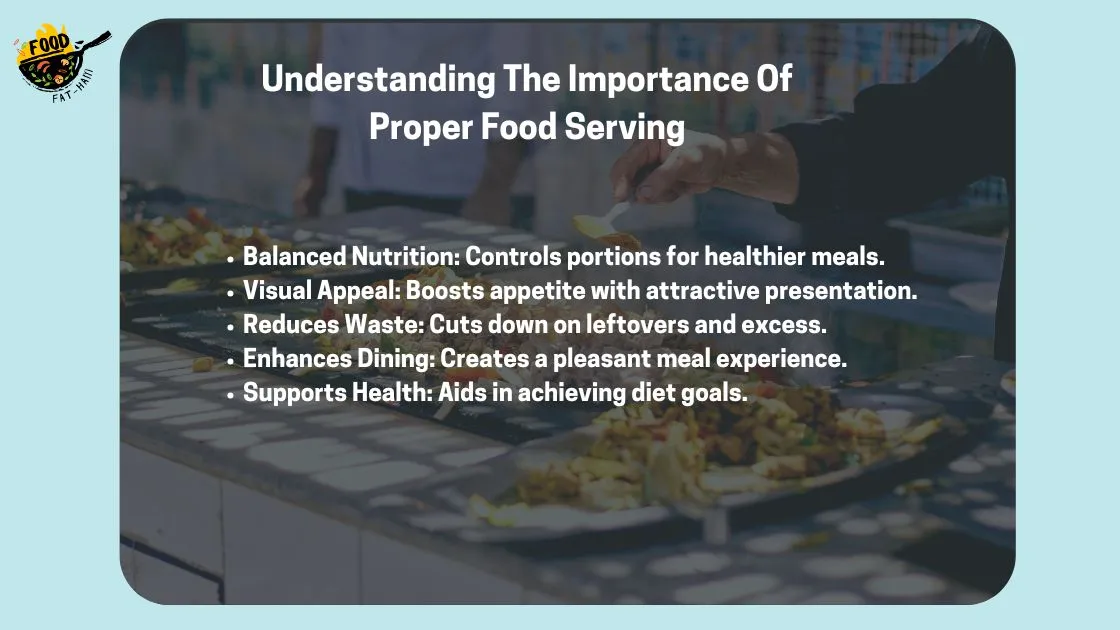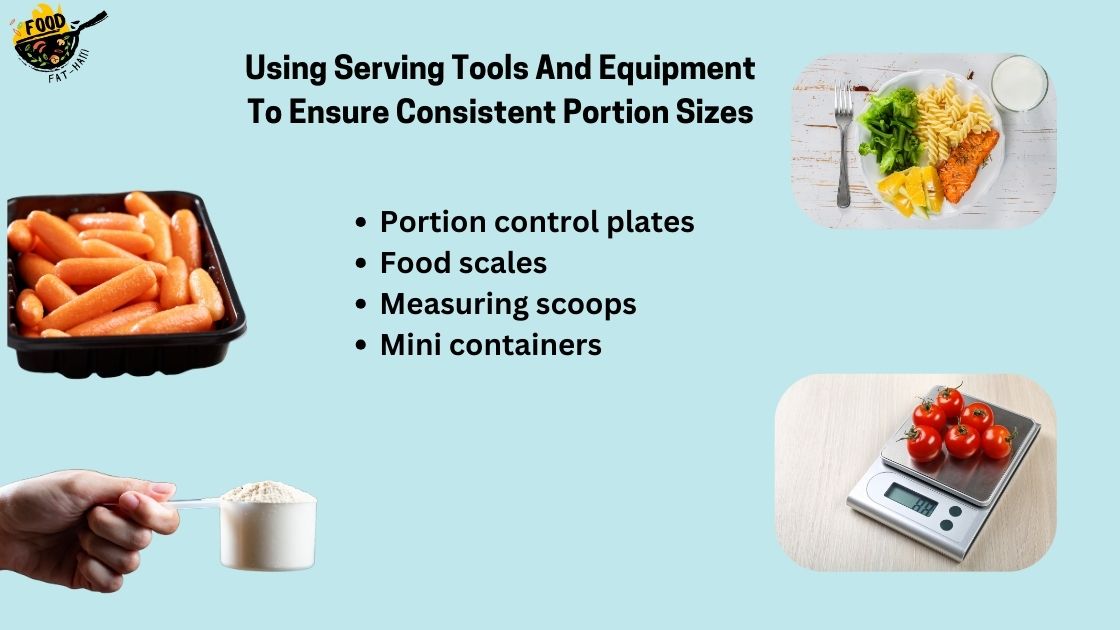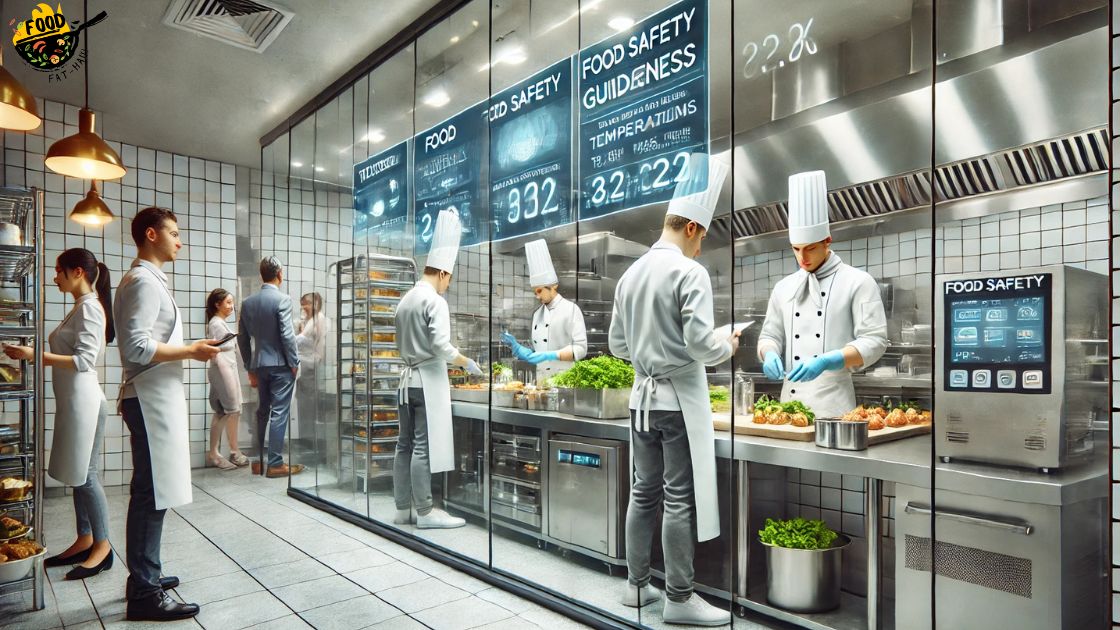The 5 guidelines for serving food are: In a nutshell, the five guidelines for serving food encompass presentation, timing, temperature, portion size, and etiquette. Serving food involves certain protocols and best practices to ensure the safety and satisfaction of guests.
Table of Contents
ToggleMeeting these guidelines is crucial for providing a high-quality dining experience. We will discuss the 5 guidelines for serving food in detail, exploring various aspects of each guideline and providing tips for implementation.
By following these guidelines, food service professionals can create a positive and enjoyable experience for both their guests and their establishment.
Understanding The Importance Of Proper Food Serving
Understanding the importance of proper food serving is crucial for maintaining hygiene and ensuring customer satisfaction. Adhering to the 5 guidelines for serving food, including proper portion control and presenting dishes attractively, can enhance the dining experience and promote food safety.

Importance Of Food Serving Guidelines In Ensuring Customer Satisfaction
Properly serving food is not just about placing a plate in front of a customer. It involves a set of guidelines that play a vital role in ensuring customer satisfaction. Understanding the importance of these guidelines is essential for creating a positive dining experience.
Here are five guidelines that highlight the significance of proper food serving:
Enhancing The Dining Experience Through Proper Food Presentation:
- Pay attention to plate presentation: Plating the dish in an attractive and appetizing manner can enhance the overall dining experience. The way a dish is presented can impact the perception of its taste and quality.
- Visual appeal matters: Aesthetically pleasing food presentation can ignite the appetite and make the dining experience more enjoyable. Balanced colors, textures, and arrangement are key factors to consider when serving food.
- Utilize appropriate serving utensils: Choosing the right utensils, such as tongs, ladles, and serving spoons, ensures cleanliness, professionalism, and ease of serving. This attention to detail adds to the overall positive experience.
- Portion control: Serving appropriate portion sizes is crucial. Not only does it meet customers’ expectations, but it also helps minimize food wastage and maintain cost-effectiveness.
- Garnishing and decorating: Adding garnishes, such as herbs, edible flowers, or sauces, can elevate the appearance of a dish and make it visually appealing. Attention to detail in garnishing shows a commitment to excellence.
Proper food serving guidelines hold immense significance in the culinary world. By adhering to these guidelines, restaurants and food establishments can ensure customer satisfaction and create a memorable dining experience.
From plate presentation to garnishing, each element plays a vital role in enhancing the enjoyment and overall satisfaction of customers.
Maintaining Hygiene And Safety Standards
When it comes to serving food, it is crucial to maintain hygiene and safety standards. Here are the five guidelines to follow: prioritize handwashing, keep raw and cooked foods separate, cook food thoroughly, properly store perishable items, and regularly clean and sanitize preparation areas.

Proper Hand Hygiene And Food Handling Practices
- Wash hands thoroughly with soap and warm water before handling any food.
- Use hand sanitizers or hand wipes when soap and water are not available.
- Avoid touching your face, hair, or any other body parts while handling food.
- Use gloves or utensils for ready-to-eat food items to prevent cross-contamination.
- Train staff on proper handling techniques and implement regular handwashing protocols.
Maintaining Clean And Sanitized Serving Utensils And Equipment
- Regularly clean and sanitize all serving utensils, including spoons, tongs, and ladles.
- Use hot, soapy water and a brush to remove any food residue from utensils.
- Rinse utensils thoroughly to remove detergent and sanitize them with a food-safe sanitizer.
- Clean and sanitize equipment, such as food warmers and buffet stations, before and after each use.
- Implement a regular cleaning schedule to ensure all surfaces and equipment are clean and safe for use.
Safe Storage And Temperature Control During Food Service:
- Store food items in a cool, dry place away from direct sunlight and potential contaminants.
- Maintain the recommended storage temperature for different food items to prevent spoilage and bacterial growth.
- Use food thermometers to monitor and ensure that hot food is kept at a minimum internal temperature of 140°F (60°C) and cold food below 41°F (5°C).
- Practice the “first in, first out” (FIFO) rule to prevent the expiration of food items.
- Regularly check and calibrate refrigeration equipment to maintain proper temperature control.
Remember, proper hand hygiene, clean utensils, and temperature control are essential for maintaining hygiene and safety standards while serving food. By following these guidelines, you can ensure the well-being of your customers and provide them with a safe dining experience.
Keep in mind that implementing these practices consistently is key to creating a clean and safe environment for everyone.
Implementing Appropriate Portion Control
Implementing appropriate portion control is essential when serving food. Following these 5 guidelines can help ensure that each serving is correctly sized and balanced, promoting healthy eating habits.
Importance Of Portion Control For Maintaining Nutritional Balance
Implementing appropriate portion control is crucial for maintaining a healthy and balanced diet. By controlling the amount of food we consume, we can ensure that we are providing our bodies with the right nutrients without overindulging.
Here are a few reasons why portion control is important for maintaining nutritional balance:
- Prevents overeating: Portion control helps us avoid consuming excess calories, which can lead to weight gain and various health issues. It allows us to eat until we feel satisfied, rather than continuing to eat until we are overly full.
- Balances macronutrients: Following portion control guidelines ensures that we consume the right proportions of macronutrients, such as carbohydrates, proteins, and fats. This helps to support our energy levels, muscle growth, and overall bodily functions.
- Controls sugar and sodium intake: Many processed foods and beverages contain high amounts of sugar and sodium. Implementing portion control allows us to limit our intake of these substances, reducing the risk of conditions like obesity, diabetes, and high blood pressure.
Tips For Portioning Food Accurately
When it comes to portioning food accurately, there are several strategies you can follow to ensure you are serving appropriate amounts.
Consider the following tips:
- Use measuring tools: Utilize measuring cups, spoons, and kitchen scales to accurately measure ingredients before serving. This not only guarantees portion accuracy but also helps you track your nutrient intake more precisely.
- Read food labels: Pay attention to the serving sizes mentioned on food labels. It’s easy to consume more than a single portion without realizing it. Understanding the serving size can guide you in portioning your meals accordingly.
- Apply the “plate method”: Divide your plate into sections, dedicating half to vegetables, one-quarter to lean protein, and one-quarter to whole grains or starchy foods. This visual approach can assist you in serving balanced portion sizes.
Using Serving Tools And Equipment To Ensure Consistent Portion Sizes

To achieve consistent portion sizes, the use of serving tools and equipment is essential.
Here are a few suggestions to help you maintain portion consistency:
- Portion control plates: These plates have designated sections to guide the distribution of different food groups, ensuring you serve appropriate amounts.
- Food scales: Investing in a reliable food scale allows you to weigh ingredients accurately, aiding in portion control and adherence to recipes.
- Measuring scoops: Use measuring scoops for serving specific quantities of ingredients like rice, pasta, or condiments. This guarantees consistent portion sizes and avoids excessive consumption.
- Mini containers: For snacks or pre-packed meals, use small, portion-sized containers to avoid mindless eating and prevent overindulgence.
Implementing appropriate portion control is key to maintaining nutritional balance. By following these tips and utilizing serving tools and equipment, you can ensure consistent portion sizes, supporting a healthy and well-balanced diet.
Enhancing Visual Appeal Through Food Presentation
Enhance the visual appeal of your dishes with these 5 guidelines for serving food. Create eye-catching presentations by considering color, texture, arrangement, and garnishing techniques. Elevate the dining experience and leave a lasting impression on your guests.
Importance Of Visually Appealing Food Presentation
Visual appeal plays a crucial role in how we perceive food. When presented well, a dish can instantly captivate our attention and make us want to indulge in its flavors.
Here’s why visually appealing food presentation is important:
- First impressions matter: When serving food, the way it looks is the first thing that catches our eye. A beautifully presented dish can create anticipation and make the dining experience more enjoyable.
- Increased appetite: A visually appealing plate can stimulate our senses and enhance our appetite. Vibrant colors, interesting shapes, and thoughtful arrangements can make food more enticing and appetizing.
- Perception of quality: When food is presented in an aesthetically pleasing manner, it automatically gives the impression of high quality. It shows that care and attention to detail have been given to the dish, elevating its perceived value.
- Memorable dining experience: Just like a piece of art, visually appealing food presentation has the power to leave a lasting impression. It adds an element of creativity and surprise to the dining experience, making it more memorable for the guests.
Arranging Food On Plates Creatively And Aesthetically
Great food presentation goes beyond simply piling up ingredients on a plate.
Here are some tips for arranging food on plates creatively and aesthetically:
- Balance and symmetry: A visually pleasing plate often follows the principles of balance and symmetry. Distribute the different elements of the dish evenly on the plate to create a harmonious composition.
- Use of negative space: Negative space, the empty areas on the plate, can play an important role in creating visual appeal. Give some breathing room between different elements to avoid overcrowding and allow the main components to stand out.
- Color coordination: Consider the color palette of the ingredients when arranging the dish. Complementary colors can create visual interest, while contrasting colors can make certain elements pop. Aim for a balanced and visually appealing color scheme.
- Height and texture: Incorporating varying heights and textures can add depth and dimension to your plate. Experiment with layering ingredients, stacking elements, or using different textures to create visual interest and enhance the overall presentation.
Adding Garnishes, Sauces, And Condiments For Enhanced Visual Appeal

Garnishes, sauces, and condiments are culinary tools that can elevate the visual appeal of a dish.
Here’s how they can enhance the overall presentation:
- Garnishes: Thoughtfully chosen and placed garnishes can add a touch of elegance and visual interest to a plate. Fresh herbs, edible flowers, or finely sliced vegetables can enhance the overall aesthetics while also adding flavor.
- Sauces: Drizzling sauces or creating artistic swirls on the plate can make a dish visually appealing. The sauces not only add flavor but also create beautiful patterns and enhance the overall presentation.
- Condiments: Pairing the main dish with complementary condiments can enhance the visual appeal of a plate. These condiments can provide contrasting colors, and textures, or even add pops of flavor, making the dish more visually enticing.
Remember, visual appeal in food presentation is about creating an experience that pleases the eye and entices the taste buds. By arranging food creatively, considering color coordination, and adding garnishes, sauces, and condiments thoughtfully, you can enhance the overall visual appeal of your dishes and elevate the dining experience.
Ensuring Effective Communication With Customers

To ensure effective communication with customers, it is important to follow five essential guidelines for serving food. These guidelines include attentive listening, clear and concise language, non-verbal cues, empathy, and personalization. By incorporating these strategies, businesses can create positive and satisfying interactions with their customers.
Importance Of Clear And Concise Communication When Serving Food
When it comes to serving food, effective communication with customers is crucial. This not only helps in understanding their preferences and dietary restrictions but also ensures a pleasant dining experience. Clear and concise communication plays a vital role in delivering excellent customer service and maintaining your reputation as a reliable establishment.
Here are some guidelines for ensuring effective communication with your customers:
Engaging With Customers To Understand Their Preferences And Dietary Restrictions
Actively listen to your customers and engage in meaningful conversations to understand their individual preferences and dietary restrictions.
Ask questions and offer suggestions to help them make informed choices.
Take note of special requests and tailor their dining experience accordingly.
Ensure that your staff is trained to handle customer queries regarding allergies, dietary restrictions, and ingredient information.
Providing Accurate Information About Dishes And Ingredients
In order to serve your customers well, it is essential to provide accurate information about the dishes and ingredients on your menu.
Clearly label vegetarian, vegan, gluten-free, and other dietary options to assist customers in making suitable choices.
Be knowledgeable about the specific ingredients used in each dish and their potential allergens.
Offer detailed explanations about the preparation methods and can make alternative recommendations if necessary.
Ensuring Transparency In Food Preparation And Handling
Customers appreciate transparency when it comes to food preparation and handling. Clearly communicate any special precautions taken for allergen-free or dietary-specific meals.

Keep customers informed about the cooking methods, sources of ingredients, and any potential cross-contamination risks. Train your staff to promptly provide accurate information to customers and address their concerns regarding food safety and hygiene.
Offering Clear And Concise Menu Descriptions
Use simple and concise language in your menu descriptions to facilitate easy understanding for your customers. Clearly mention key ingredients, flavors, and cooking techniques used in each dish.
Avoid using excessive jargon or unfamiliar culinary terms that can confuse your customers. Ensure that your menu descriptions accurately represent the taste, texture, and presentation of the dishes.
Going The Extra Mile With Attentive Service
- Effective communication goes beyond just providing information; it also involves displaying attentive service.
- Train your staff to be attentive, friendly, and approachable to create a welcoming atmosphere.
- Encourage your staff to check in with customers periodically to address any concerns or requests.
- Show genuine interest in your customers’ satisfaction and make them feel valued throughout their dining experience.
Clear and concise communication is vital when serving food. Engaging with customers, providing accurate information about dishes and ingredients, ensuring transparency in food preparation, offering clear menu descriptions, and delivering attentive service are all essential guidelines to follow for effective communication with customers.
By adhering to these guidelines, you can create positive dining experiences and establish lasting relationships with your customers.
Frequently Asked Questions Of What Are The 5 Guidelines For Serving Food
What are the essential principles of serving food?
The fundamental principles include presentation, timing, temperature, portion size, and etiquette.
How can I improve my food serving skills at home?
Start by focusing on presentation, perfecting timing, and practicing proper dining etiquette.
Why is presentation important when serving food?
Presentation enhances the visual appeal of food and stimulates the appetite.
What is the role of cultural influences in food serving practices?
Different cultures have unique traditions and practices in serving food, reflecting their culinary heritage.
How can sustainability be incorporated into food service practices?
Sustainability can be achieved by reducing food waste, using eco-friendly serveware, and adopting responsible serving practices.
Conclusion
Adhering to these five guidelines for serving food is crucial in ensuring a pleasant and safe dining experience for both customers and businesses. By prioritizing cleanliness and hygiene, maintaining proper food storage and handling techniques, considering dietary restrictions and allergies, ensuring appropriate portion sizes, and presenting food attractively, you can guarantee customer satisfaction and encourage repeat visits.
Furthermore, incorporating seasonal and locally sourced ingredients not only adds variety to the menu but also supports local farmers and the overall community. By following these guidelines, you can establish a reputation for excellence and attract a loyal customer base.
Remember, attention to detail and an unwavering commitment to quality are key in the food service industry. Stay informed, and adaptable, and always strive for improvement. Together, let’s shape the future of the culinary world.




